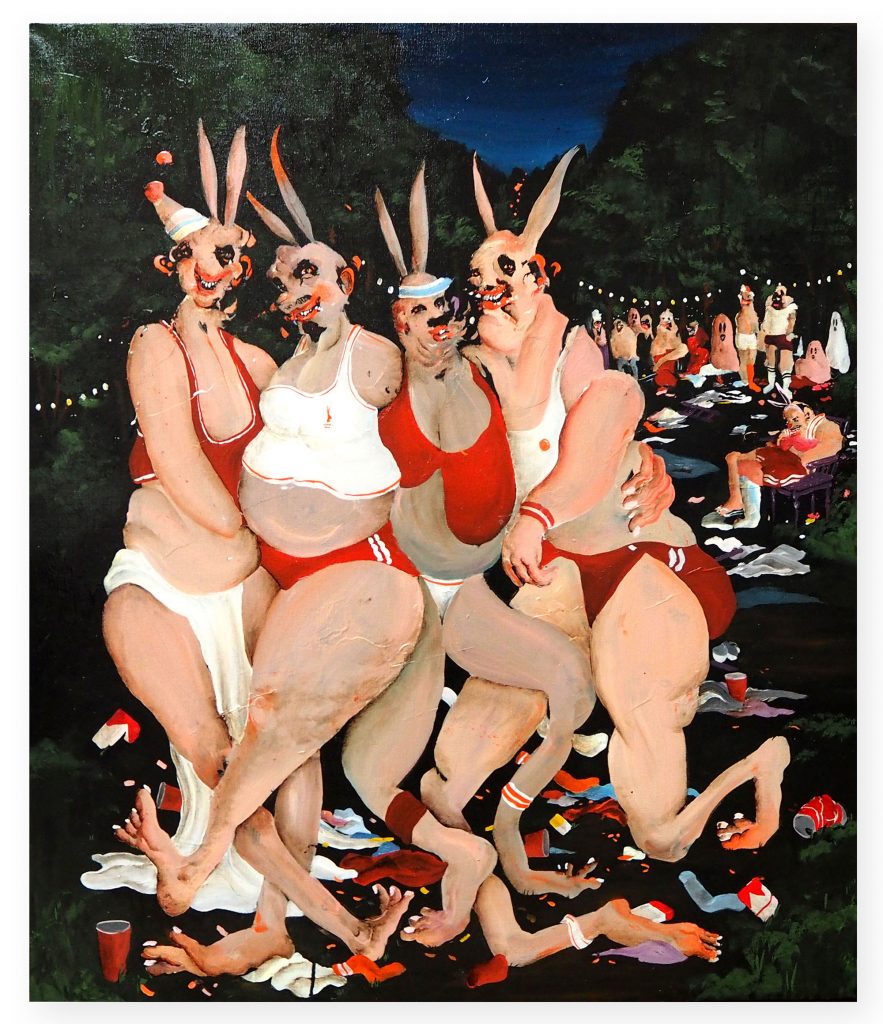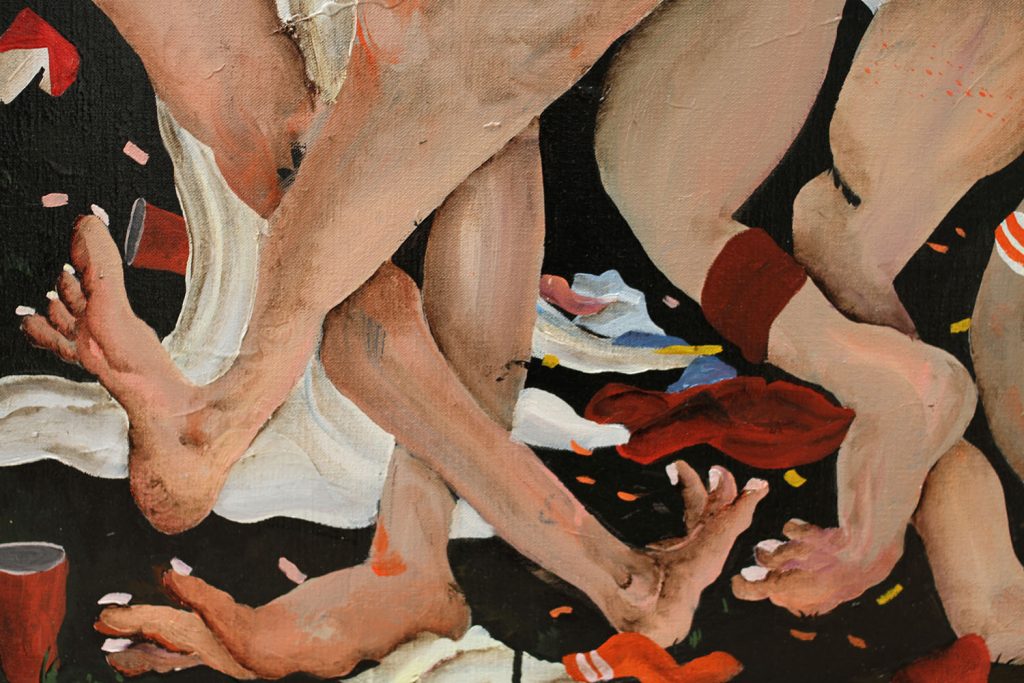The Dancing Plague
Painting
oil on canvas
85cm by 100cm
2019
The outbreak began in July 1518 when a woman began to dance fervently in a street in Strasbourg.
Historical sources agree that there was an outbreak of dancing after a single woman started dancing, a group of mostly young women joined in, and the dancing did not seem to die down. It lasted for such a long time that it attracted the attention of the Strasbourg magistrate and bishop, and some number of doctors ultimately intervened, putting the afflicted in a hospital.
Controversy exists over whether people ultimately danced to their deaths.
Some sources claim that, for a period, the plague killed around fifteen people per day; however, the sources of the city of Strasbourg at the time of the events did not mention the number of deaths, or even if there were fatalities. There do not appear to be any sources contemporaneous to the events that make note of any fatalities.
The main source for this claim comes from John Waller, who has written several journal articles on the subject and the book A Time to Dance, a Time to Die: The Extraordinary Story of the Dancing Plague of 1518. The sources cited by Waller that mention deaths were all from later retellings of the events. There is also uncertainty around the identity of the initial dancer (either an unnamed woman or "Frau Troffea") and the number of dancers involved (somewhere between 50 and 400).



